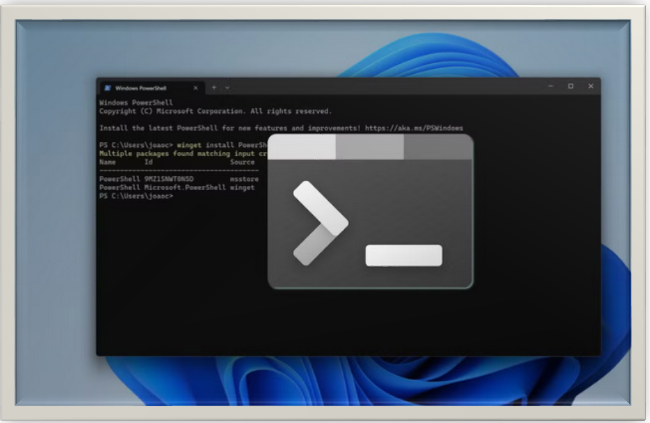TOOLS AND TECHNIQUES FOR EFFECTIVE NETWORK TRAFFIC MONITORING
Discover essential tools & techniques for efficient network monitoring. Learn how to optimize performance & ensure seamless connectivity. Expert tips inside!

INTRODUCTION:
Imagine a highway clogged with vehicles of all kinds. Your network is similar to that, constantly transferring data between your devices. Data is constantly zipping across it, transferring data from devices to the internet. Unfortunately, network activity jams or broken pathways are invisible. This is where network monitoring comes in handy; it's like having a watchful eye on your automated highway, ensuring smooth operation.
Maintaining the health and security of your network infrastructure requires knowing the fundamentals of network monitoring, whether you are an IT novice or an experienced professional. This article dives right into the realm of organized network monitoring, breaking down the basic tools and processes for beginners. We'll simplify technical jargon, look at various monitoring techniques, and arm you with knowledge to maintain a sound and effective network.
Understanding network monitoring:
The process of monitoring and evaluating network traffic to identify possible problems, ensure optimal performance, and enhance security is known as "Network monitoring." Regularly monitoring your network will help you identify anomalies, resolve problems, and foresee downtime before it occurs.
Why is Network Monitoring Essential?
Consider it as the backbone for your digital processes. A moderate or malfunctioning network undermines efficiency, ruins communication, and can seriously damage your reputation in the business world. Network monitoring helps you:
· Recognize and troubleshoot problems: Before the problems start, monitoring helps identify the glitches early on, allowing for speedy remedies.
· Maintain network performance: Monitoring ensures a steady flow of data by keeping an eye on factors like latency and bandwidth consumption.
· Boost network security: This can help you spot unusual activity and any security threats.
· Plan for future needs: Gathering information through network monitoring helps to structure utilization designs and make plans for updates and development in the future.
Flow VS Packet data
Two primary methods are used by network monitoring devices to compile information: Flow data and packet data. Let's dissect the differences:
· Flow Data: Picture yourself counting cars over on a highway. A high-level overview of traffic is provided by flow data, including source and destination addresses, types of applications (such as email or video streams), and totals of the amount of information transferred. It works well for identifying bottlenecks and patterns.
· Packet data: This is similar to inspecting every vehicle on the highways. The individual packets (data segments) that comprise network traffic are captured by packet data. It enables deeper analysis, such as detecting certain devices or virus signatures.
Depending on your specific requirements, the best method typically combines both flow and packet data.
Essential Tips for Effective Network Monitoring:
1. Define Your Objectives:
Before diving into the network monitoring process, define your objectives in detail. Select the aspects of your network that require monitoring, such as bandwidth usage, network latency, or security risks.
2. Select the Proper Tools:
Choosing the appropriate monitoring tools is fundamental. For novices, easy-to-use tools such as Nagios, Zabbix, or PRTG provide intuitive interfaces and fundamental features for monitoring network health.
3. Monitor key metrics:
Determine which key performance indicators (KPIs) are critical to your network environment. These could incorporate bandwidth usage, packet loss, latency, and CPU and memory usage.
4. Set Up Alarm:
Configure alerts to notify you when predetermined thresholds are exceeded or when anomalous behavior is detected. Alarms can help you prevent planned blackouts and deal with problems proactively.
5. Implement network segmentation:
Divide your network into smaller segments to expedite implementation, enhance security, and simplify monitoring. You can more effectively manage access and isolate critical resources by using segmentation.
6. Regularly Update Software and Firmware:
Maintaining the most recent versions of your software, devices, and checking tools will ensure optimal performance and guard against security flaws.
7. Document your Network:
Maintain detailed records of your network topology, including device configurations, IP addresses, and network diagrams. Documentation simplifies research and makes group members' participation easier.
Essential Tools for Network Monitoring
Several tools are available for network monitoring, each meeting different requirements and network sizes. Below is a summary of several popular substitutes:
1. Nagios: One popular open-source monitoring system that is well-known for its flexibility and extensibility is Nagios. It supports a large selection of plugins for monitoring servers, devices, software, and services.
2. Zabbix: Zabbix is an additional robust open-source monitoring platform that offers extensive monitoring features, including server, application, and application monitoring. The monitoring configurations can be easily designed and customized thanks to its web-based interface.
3. PRTG Network Monitor: PRTG is an easy-to-use tool for monitoring networks that provide real-time information on the performance and availability of networks. With its auto-discovery feature, PRTG reorganizes how you add devices to your monitoring configuration.
4. Wireshark: You can record and analyze network traffic in real time with this useful network protocol analyzer. It's essential for identifying security threats and debugging system problems.
5. SolarWinds Network Performance Monitor (NPM): One complete network monitoring system designed for enterprises is SolarWinds NPM. It provides advanced features including predictive analytics, network mapping, and performance analysis.
6. Network Traffic Analyzers: These all-inclusive tools provide a single point of contact for monitoring any aspect of network traffic, such as bandwidth usage, application performance, and possible security risks.
7. Parcel Sniffers: These tools record and examine network traffic data packets, providing a deeper comprehension of network activity. However, using them on a shared network may have privacy concerns, so make sure to confirm the regulations before deploying.
8. Built-in Router Tools: A lot of routers come equipped with vital network monitoring features. They're a wonderful starting point for smaller networks even though they're not as feature-rich as dedicated devices.
9. Flow Analyzers: By analyzing network traffic flows, these devices provide information about possible bottlenecks, application traffic patterns, and bandwidth use.
Techniques for Network Monitoring
After looking into the equipment, let's examine some important observation techniques:
1. SNMP monitoring: The Simple Network Management Protocol (SNMP) is a protocol that is frequently used to monitor and manage network devices. Your devices' SNMP settings will allow you to collect useful performance data for monitoring.
2. Flow Monitoring: Flow monitoring technologies such as NetFlow, sFlow, and IPFIX provide insights into network traffic patterns source and destination IP address counts, patterns, and bandwidth usage.
3. Packet capture analysis: You can capture and examine network packets in detail using packet capture tools like Wireshark. You can diagnose network issues and troubleshoot performance problems by analyzing packet headers and payloads.
4. Log Analysis: Vital information about system health, security events, and user behavior can be found by examining log records produced by network devices, servers, and apps. Tools for log analysis streamline the process of interpreting and connecting log data for easier analysis.
5. Ping Monitoring: This crucial but useful method uses the "ping" command to determine whether devices are reachable and to gauge how quickly they respond.
6. Bandwidth monitoring: This technique measures the amount of data passing through the various segments of your network, assisting in the identification of any bottlenecks and the optimization of resource allocation.
7. Latency Monitoring: This refers to the amount of time it takes for data to move between points on your network. Monitoring latency ensures responsiveness and prevents slow network performance.
8. Packet loss monitoring: This technique gauges the proportion of data packets that fail to reach their objectives, indicating possible hardware malfunctions or network congestion.
9. Uptime Monitoring: This method keeps track of how long your network devices and services have been up and running, which helps you identify blackouts and maintain service availability.
Setting up Effective Alerts
When network monitoring alerts you in advance to possible problems, it is most profitable.
Here's how to put up effective warnings:
· Analyze and define alert thresholds: Establish certain thresholds for monitored metrics such as latency or packet loss. An alert is triggered when certain limits are breached.
· Pick Your Notification Channels: Select whether you want to get alerts by pop-up notifications on your monitoring software, SMS, or email.
· Give Alerts Priority: Sort alarms according to severity to ensure that critical issues are taken care of right away.
Beyond the Devices: The Best Practices for Network Monitoring
Remember that network monitoring is a continuous process. Here are a few best practices to consider:
· Document your Network: Map out the devices in your setup, their connections, and the essential services. In the course of troubleshooting, this documentation becomes essential.
· Regularly review monitoring Data: Don't set up alerts and almost ignore them. Analyze data regularly to identify trends and possible improvement areas.
· Adjust and Refine: Your monitoring strategy should progress along with your network. To make sure your selected tools, tactics, and alert thresholds continue to be effective, regularly review them.
CONCLUSION:
It takes a combination of skills, resources, and techniques to become proficient in network monitoring. Following the basic guidelines provided in this guide and making use of the appropriate tools and processes will enable you to effectively monitor your network, identify possible problems, and guarantee optimal security and performance. Remember to continuously improve and modify your monitoring strategy to stay up with the ever-changing demands of your network environment.
Thanks for reading.
If you like the article, consider sharing and subscribing. ;)




